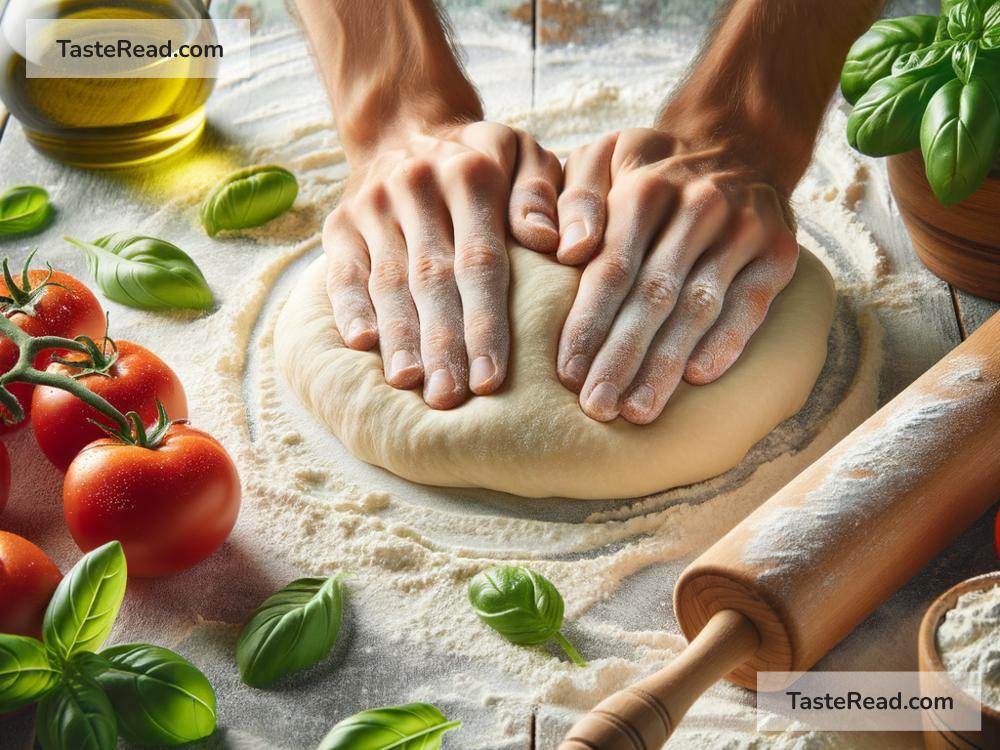How to Make Homemade Pizza Dough in Simple English
Pizza is one of the most loved foods around the world, and nothing beats the taste of homemade pizza! The key to making great pizza at home starts with the dough. Don’t worry if you’ve never tried making pizza dough before—it’s easier than you might think. In this blog, I’ll walk you through a simple step-by-step process to make your own homemade pizza dough.
Why Make Pizza Dough at Home?
Homemade pizza dough gives you full control over the ingredients, which means you can make it as fresh and healthy as you like. Plus, the smell of freshly baked dough in your kitchen is unbeatable. By making your own dough, you can personalize your pizza to your taste—whether you love thin crust or prefer it thick and chewy.
Let’s get started!
Ingredients You’ll Need for Pizza Dough
To make pizza dough at home, you do not need fancy ingredients. The basics are:
- Flour: 3 cups (you can use all-purpose or bread flour)
- Yeast: 1 packet (instant or active dry yeast, about 2 ¼ teaspoons)
- Warm Water: 1 cup (around 110°F or warm enough to touch, not hot)
- Sugar: 1 tablespoon (to help activate the yeast)
- Salt: 1 teaspoon (for flavor)
- Olive Oil: 2 tablespoons (optional but adds richness and elasticity)
Step-by-Step Guide
Step 1: Activate the Yeast
The first step is helping the yeast wake up and start working. In a large bowl, combine warm water and sugar. Stir until the sugar dissolves. Sprinkle the yeast over the water and let it sit for about 5-10 minutes.
You’ll notice bubbles and foam forming—this means the yeast is alive and ready to work. If there’s no foam, either the yeast is old, or the water was too hot. You’ll need to start again with fresh ingredients.
Step 2: Mix the Dough
Once the yeast is activated, add the salt and olive oil to the bowl. Then gradually add the flour, one cup at a time, mixing it after each addition. You can use a spoon or your hands to mix.
As you keep adding flour, the mixture will start turning into dough. Once it’s too thick to stir, it’s time to knead it.
Step 3: Knead the Dough
Dust some flour on a clean countertop to prevent sticking. Place your dough on the counter and start kneading. This simply means pushing, folding, and stretching the dough with your hands. Kneading helps the dough become smooth and elastic.
Knead for about 8-10 minutes. If the dough feels too sticky, sprinkle a little more flour on it, but not too much—you don’t want it to become dry.
Step 4: Let the Dough Rise
Pizza dough needs some time to rest and rise so it becomes airy and soft. Lightly coat a clean bowl with olive oil, place the dough inside, and cover the bowl with a clean kitchen towel or plastic wrap. Leave the dough in a warm place for about 1-2 hours.
During this time, the yeast will make the dough grow in size (it might double or get puffy—it’s like magic!). If your kitchen is cold, you can place the dough near a sunny window or preheat your oven for a minute, turn it off, and let the dough rise inside.
Step 5: Shape the Dough
After the dough has risen, gently punch it down to release some air. Divide it into smaller portions if you’re making more than one pizza. Use a rolling pin or your hands to stretch and shape the dough into a circle, rectangle, or any shape you like.
For thin crust pizza, roll the dough out very flat. For thicker crusts, roll it less. Place the dough on a pizza pan or baking sheet lined with parchment paper or lightly floured.
Step 6: Add Toppings and Bake
Now comes the fun part—toppings! Spread your favorite pizza sauce over the dough, then add cheese, vegetables, pepperoni, or any other ingredients you love.
Preheat your oven to 475°F (245°C). Bake the pizza for about 12-15 minutes, or until the crust turns golden brown and the cheese is bubbling. Keep an eye on it to avoid burning.
Tips for Great Pizza Dough
- Use fresh yeast: Old yeast won’t activate properly, and your dough may not rise.
- Don’t rush the rising time: Letting the dough rest and rise is key to a good texture.
- Experiment with flour: For chewier crusts, try bread flour; for thin crusts, use all-purpose flour.
- Make extra dough: You can freeze leftover dough in a sealed bag for up to a month. Just thaw it in the fridge before using.
Enjoy Your Homemade Pizza
Congratulations—you’ve made pizza dough from scratch! Whether you’re hosting family, enjoying a movie night, or just treating yourself, homemade pizza is always a hit. The best part is, you can get creative with flavors and toppings to suit everyone’s taste.
Now that you know how to make pizza dough, you’ll never need to order out again. So roll up your sleeves, put on some music, and turn your kitchen into a pizzeria. Enjoy!
Making pizza dough at home is simple, rewarding, and fun. So why not give it a try? Once you’ve mastered this recipe, the possibilities for delicious homemade pizzas are endless. Happy cooking!


